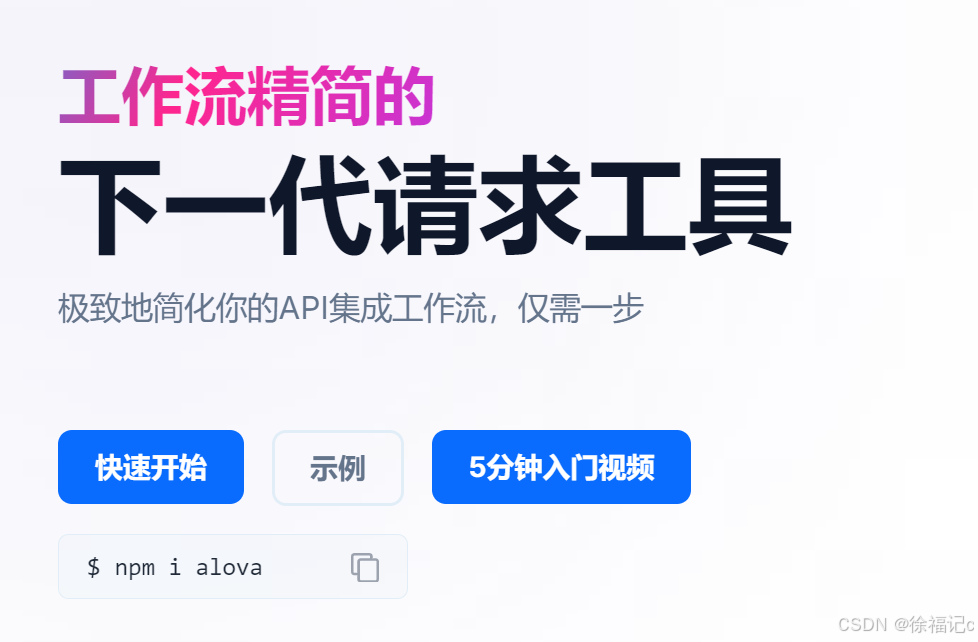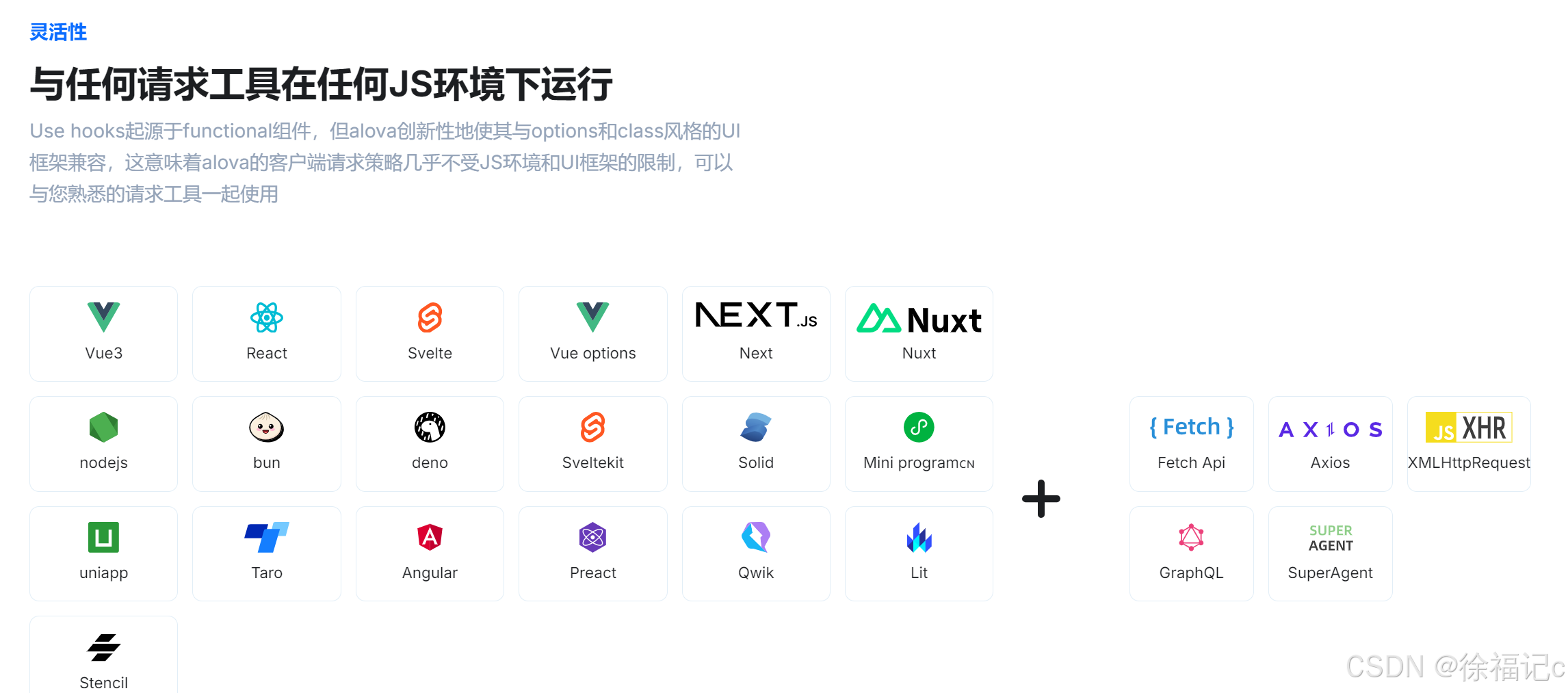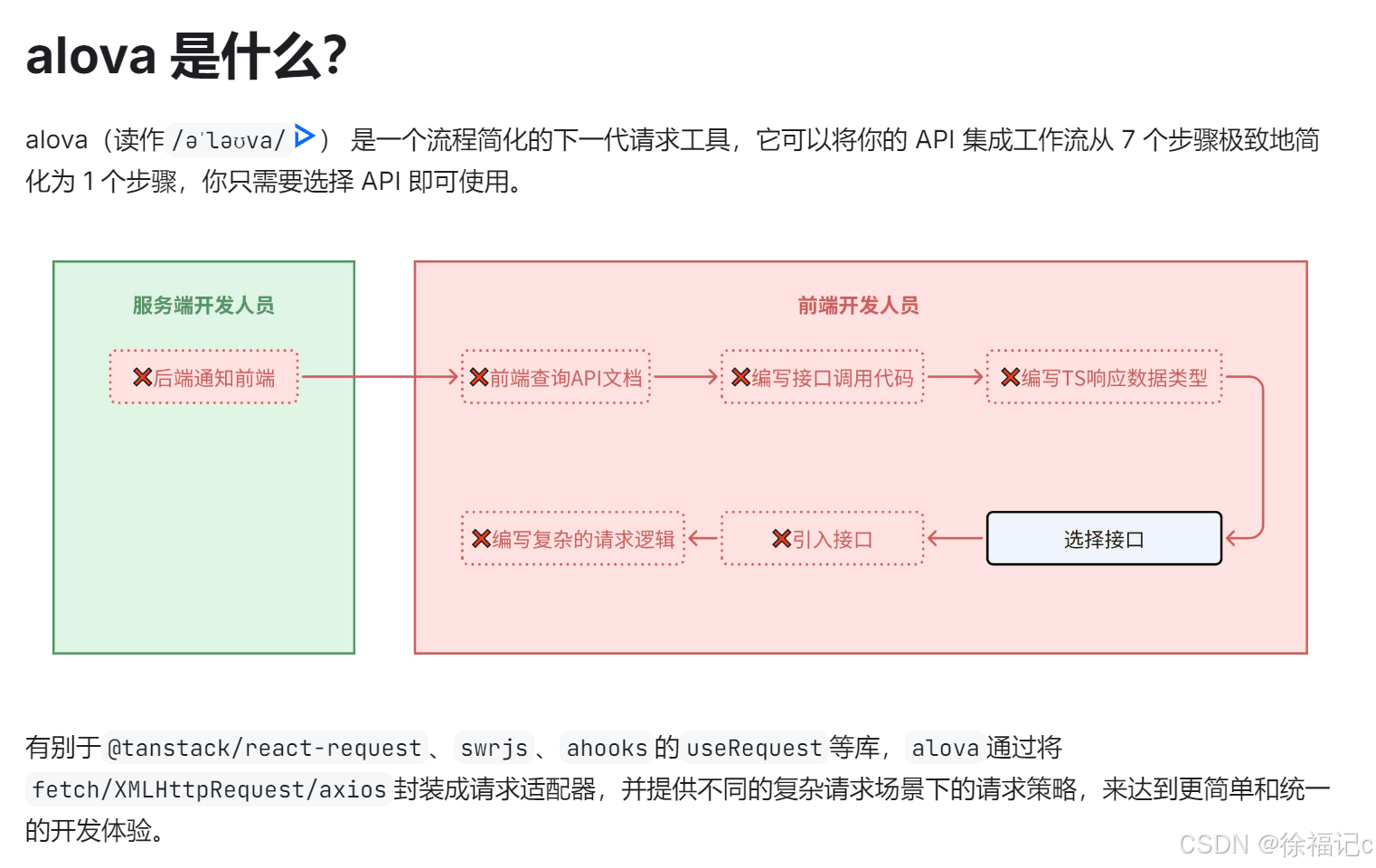官方文档:Alova.JS - 工作流精简的下一代请求工具 | Alova.JS


“alova” 是一个轻量级的请求策略库,它提供了一套完整的应对复杂请求场景的方案,我们称之为请求策略。通过简单配置参数,可以实现诸如请求共享、分页请求、表单提交、断点续传等复杂请求,而无需编写大量的代码。
Alova是一个独立的请求策略库,用于简化和优化前端的HTTP请求过程,可以与Naive.js等UI框架结合使用
alova 的目标是根据不同的请求场景提供适合的现成请求方案,从而提升应用的可用性、流畅性,降低服务端压力,以及降低开发者的编码量。它并不是完全替代 axios,而是与 axios 等请求库配合使用,提供更高级的功能。
主要特点
-
轻量级:体积小巧,只有 4kb+,是 axios 的 30%。
-
请求策略:提供多种请求策略,如分页请求、表单提交、断点续传等,通过简单配置即可实现复杂请求。
-
状态管理:内置状态管理功能,减少重复代码。
-
缓存支持:支持数据缓存,减少不必要的数据刷新。
-
多框架支持:支持 Vue、React、Svelte 等多种前端框架。
与 axios 的对比
alova 并不是完全替代 axios,而是与 axios 等请求库配合使用,提供更高级的功能。它在请求管理和状态处理上更具优势,尤其是在复杂的请求场景中。
Vue 3 组件,使用了 TypeScript 和 Composition API。主要功能是通过按钮触发一些模拟的 API 请求,用于测试或演示不同的场景,比如登出、刷新令牌、重复请求等。组件中还涉及到国际化(i18n)的使用,以及一些 UI 组件的布局和样式。
1. 安装Alova
在项目中安装Alova库:
npm install alova --save
2. 创建Alova实例
在项目中创建一个Alova实例,用于配置基础路径、适配器等信息:
import { createAlova } from 'alova';
import GlobalFetch from 'alova/GlobalFetch';
import VueHook from 'alova/vue';
export const AlovaInstance = createAlova({
baseURL: '你的域名', // 设置基础请求路径
statesHook: VueHook, // 集成Vue状态管理
requestAdapter: GlobalFetch(), // 使用fetch作为请求适配器
shareRequest: true, // 共享请求
beforeRequest() {}, // 请求前的拦截器
responded: {
onSuccess: async (response: Response) => {
const json = await response.json();
if (json.code === 1) {
&





 最低0.47元/天 解锁文章
最低0.47元/天 解锁文章

















 1392
1392

 被折叠的 条评论
为什么被折叠?
被折叠的 条评论
为什么被折叠?








